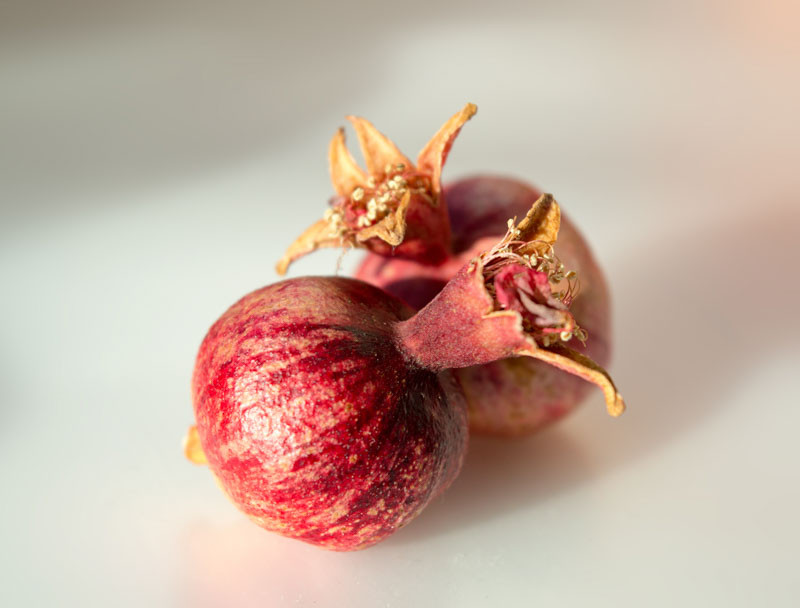Punica (Pomegranate)
Punica, commonly known as Pomegranate, is a small genus of fruit-bearing deciduous shrubs or small trees in the family Lythraceae. Punica granatum, the most well-known species, is native to regions from Iran to northern India. Pomegranates have a rich cultural history, symbolizing prosperity and fertility in many cultures.
Size: Pomegranate plants typically have a multi-stemmed, shrubby growth habit and can reach 6 to 20 feet (1.8 to 6 meters) in height and 4 to 15 feet (1.2 to 4.5 meters) in spread, although dwarf varieties are available. The leaves are glossy, narrow, and oblong, with a bright green color.
Flowers: Pomegranate flowers are showy and bright, usually orange-red, with a distinctive tubular shape. They bloom in spring to early summer, followed by the iconic fruit, which ripens in the fall.
Fruits: Pomegranate is a superfood packed with antioxidants and believed to have various health benefits.
Hardiness: Pomegranates are hardy in USDA zones 7-11, withstanding temperatures as low as 10 degrees Fahrenheit. They prefer a hot and dry climate for optimum fruit production.
Uses: Pomegranates are grown for their ornamental beauty, culinary uses, and potential health benefits. The fruit’s tart-sweet seeds, or arils, are often used in cooking, beverages, or eaten fresh. The plant is also an attractive addition to the landscape, with its showy flowers, vibrant fruit, and autumn foliage.
Pollinators: The flowers attract various pollinators, particularly bees.
Pomegranates are highly drought-tolerant once established, preferring well-drained soil and full sun. They can tolerate poor soil quality and are moderately salt-tolerant, making them suitable for coastal areas. The plant’s high resistance to drought, heat, and salinity, along with its ornamental and nutritional value, makes it a valuable addition to sustainable and edible landscapes.

